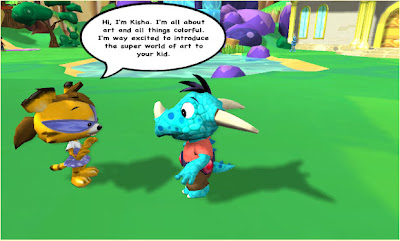Alle folgenden Geschenke gibt es noch bei Bestellung vor Montag 18:00 Uhr bei Amazon.de mit Liefergarantie zum 23.sten (Overnight-Express)!
1. Für WoW-, Twinity- und Second Life-Abhängige: Ein Buch über das Metaversum der Zukunft
2. Für Gourmets und Gadget-Fans: Digitale Löffelwaage
3. Für virtuelle Sportskanonen: Tennis-und Golfschläger-Aufsatz für Wii Remote
4. Für verkappte Rocker: Gitarren und mehr für PS3 und Wii
5. Für Google Earther und 3D-Spezis: Spacenavigator 3D-Maus
Ja, ein Buch - aber es geht um virtuelle Welten. Rainbows End beschreibt eine Zukunft, die den Nerds von heute nicht nur extrem wahrscheinlich vorkommt, sondern deren Technologien bereits überall in Ansätzen im Einsatz sind.
Augmented/Mixed Reality, Web3.D, Web2.0, WIKI, MMORPGs, KI, QR-Codes, Theme Parks, Langlebigkeit, Human Interfaces, Wearable Computers, Second Life’s Kreationsmöglichkeiten, Word of Warcraft Gilden, Creative Commons Licensing, Genetic Engineering…alles weitergesponnen und elegant eingebettet in einen packenden Thriller. Ein Muss für jeden, der sich für unsere globalisierte, kabellose, vernetzte, kollaborierende, paranoide und verspielte Zukunft interessiert. Dank noch einmal an Markus Breuer, der mir das Buch einfach eines Tages mitgebracht hat. Noch mehr Bücher: Die beiden Klassiker Snow Crash und Otherland (beide unter 10 Euro!) zeigten uns in den Neunzigerjahren, wie dreidimensionale virtuelle Online-Welten knapp zehn Jahre später aussehen würden (naja, fast!). Bei Otherland halten nur Hardcore-Fantasy-Fans die kompletten vier Bände druch, aber den ersten Band kann ich wärmstens empfehlen! Gehört ins Regal eines jeden echten Metaverse Enthusiasten.
Ein Muss für Gourmets und Küchenfeen oder Genießer, die sowieso schon alles haben. Eine ähnliche wurde gerade in WIRED gefeatured (für Geeks eine Auszeichnung).
Hier der Originaltext von Amazon: "Mit dieser Digitalen Löffelwaage kommt auch Ihre normale Küchen-Waage meist nicht mehr mit. Durch die digitale Löffelwaage lassen sich sogar wenige Tropfen Flüssigkeit exakt abwiegen - für alle feinen Dosierungen von 0,1g - 300g eignet sie sich besser, als alles bisher dagewesene! Die digitale Löffelwaage ist perfekt zur Einhaltung des Diätplans oder der korrekten Dosierung von getrockneten Kräutern."
Auf den Golf- oder Tennisplatz an der frischen Luft bekommt man den Geek sowieso nicht, aber er/sie hat eine Wii Konsole mit Wii Sports und schwärmt davon, dass man sich damit im Wohnzimmer fit halten kann (ich gehör zu denen)? Mit diesem Aufsatz ist die Illusion fast perfekt. Voraussetzung: Wii Konsole und Wii Sports Pack.
Hier gibt's ein Wii Lenkrad für schlappe 9 Euro. Wie das aussieht, wenn man so Sport macht? Hier sind etliche Videos vo Menschen in Wii-Action. Man kommt richtig ins Schwitzen, vor allem beim Tennis, das kann ich aus eigener Erfahrung bestätigen. Frauen und Mädels stehen übrigens vor allem auf's Wii-Fit Balance-Board. Dazu muss man sich aber in ein echtes Geschäft bewegen - Amazon kann's nicht mehr rechtzeitig liefern :-(
4. Hausmusik für Konsolensüchtige - Luftgitarre mit WiFi-Power: Guitar Hero World Tour Bundle mit Gitarre für die PS3 (70,40 €) oder Wii Konsole
Die Kinder hängen nur noch an der PlayStation3 herum, die sie letztes Jahr zu Weihnachten bekommen haben und wollen partout keinen Musikunterricht nehmen? Mit der kabellosen Gitarre (im Bundle enthalten), Drumpad und dem Mikrofon (17,90 €) der Guitar Hero Spiele will jeder rocken.
5. Für Google Earther, Second Lifer und 3D-Künstler: Spacenavigator 3D-Maus (49,97 €)
3D-Navigation ohne Tastaturakrobatik: Mit der Mit dem Spacenavigator, einer USB-3D-Maus von 3Dconnexion, kann man nun viel intuitiver durch Second Life und Google Earth navigieren, O bjekte bauen oder z.B. durch die leichtere Kameraführung ohne Tastaturakrobatik 3D-Filme (Machinima) drehen.
Die 3D-Maus läuft ab Second Life 1.20 (Release Candidate) unter Windows/Mac/Linux, unterstützt neben SL auch Google Earth und etliche 3D-Anwendungen (z.B. Blender, Maya, Photoshop) und es gibt sie in verschiedenen Ausführungen (z.B. extra leicht für Notebooks - diese aber leider nicht mehr vor Heiligabend)
Schöne Weihnachten!
WEITERLESEN...














 [/caption]
[/caption]
